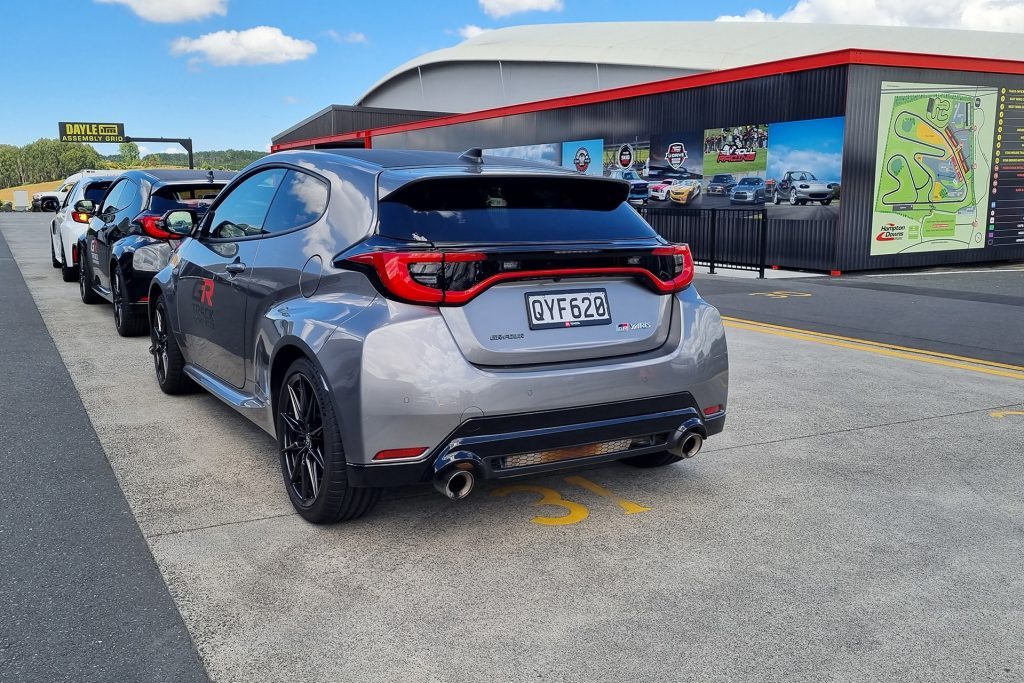Toyota’s revised GR Yaris and Corolla have arrived, the main talking point being the inclusion of an automatic transmission. Both the three-door Yaris and five-door Corolla have adopted the new eight-speed Direct Shift auto, bringing added convenience for the daily commute. But are they as fun to hoon as the manual cars? First, some nitty gritty on the new models.
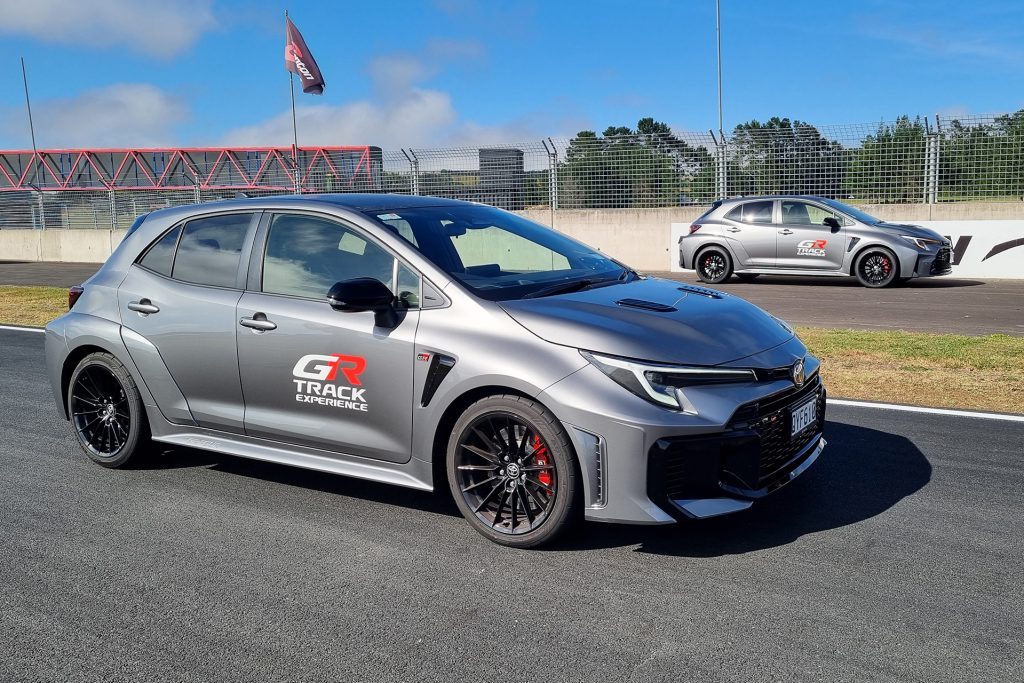
GR Corolla was first introduced in 2022 so we haven’t had to wait long for an update. It gains enhancements to the engine, still with the same 221kW but torque is up 30 units to 400Nm. Toyota NZ’s product planning manager, James Jewell, told us at the media launch recently that the enhancements to both the GR Yaris and Corolla were made based on feedback from customers, particularly those that use them for racing. The hot shoes wanted more mid-range torque, it being more helpful than additional peak power. The extra outputs are courtesy of software changes, and so the engine requires 98 octane petrol, a must thanks to the boost being rammed through it (estimated to be around 2.0 bar / 30 psi).
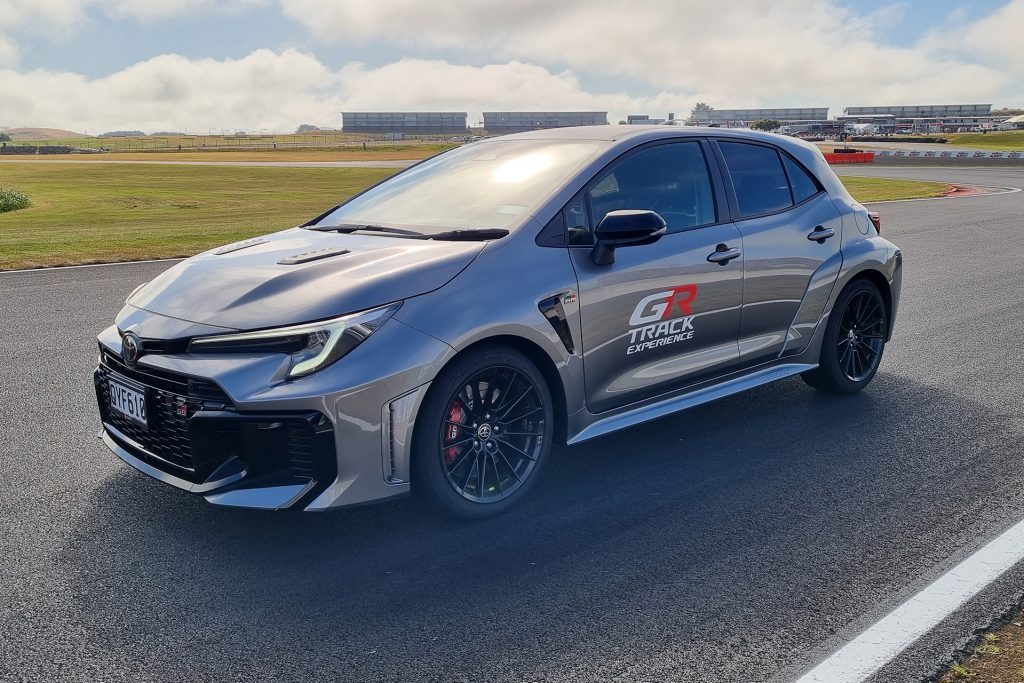
The torque can now be processed with the new eight-speed auto. This is a GR-specific box developed for ‘sports driving’, used by both the Yaris and Corolla as well as the LBX RR. It has eight closely stacked ratios, each gear with its own clutch, brake and control solenoid for faster, more precise shifting. It has AI-enhanced shift control; all the on-board sensors, including cameras, are used to help select the right gear. For those that like to fiddle, the manual swap can be executed via paddles or the lever, with a push for a down shift, pull to go up. That’s not the usual Toyota orientation, but Akiyo wanted it this way so he got it.
Suspension changes include increased spring rates and new dampers, which now have a separate rebound spring inside to improve roll stiffness when on the ragged edge. The rear trailing arm location has been altered slightly – good for minimising mid-corner, power-on squat, which in turn also helps maintain front end geometry for better steering.
There is additional cooling with a new sub radiator and an oil cooler for the auto as well. Styling changes are functional with bigger vents to feed said heat exchangers and new side breathers to improve stability.
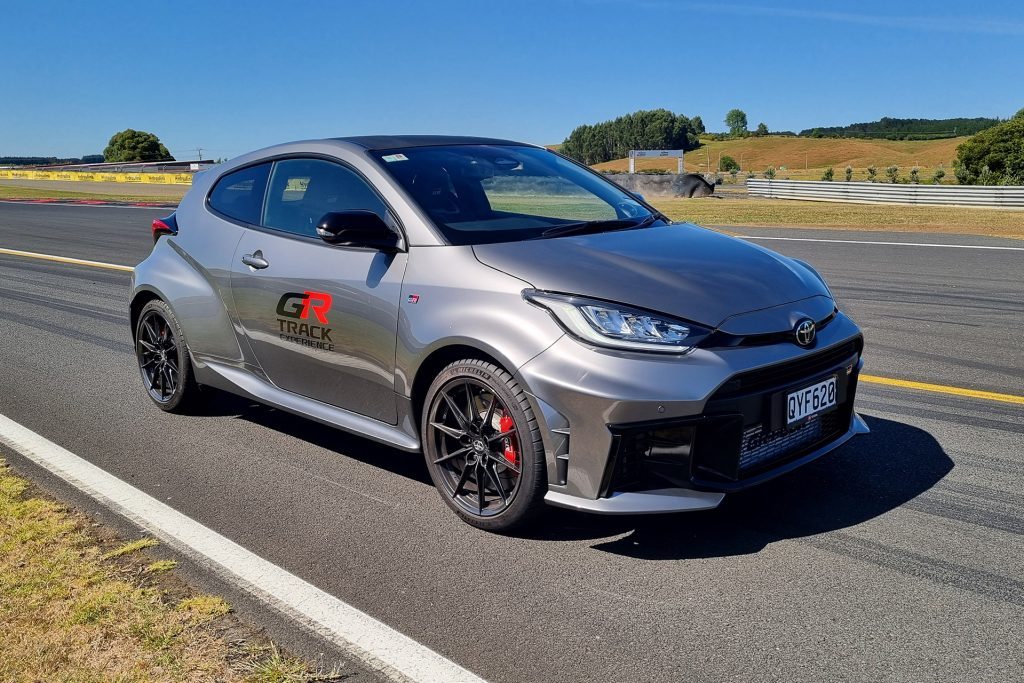
The Yaris now gets the same engine spec as the Corolla, the manual has an uprated clutch, and there is an intercooler sprayer (they reckon it helps prevent the loss of 11kW when things are getting hot). The eight speed auto is an option for Yaris too. These days, it is usual for the auto to return better fuel numbers than the manual, but that’s not the case here. While the manual GR Yaris is rated at 9.1L/100km, the auto figure is 10.1L/100km. Apparently it’s down to the choice of planetary gears, not the most efficient but good at quick, direct changes. No 0-100km/h figures are quoted, but the auto has a launch control function to help it boost from the spot.
The AWD system carries over with Torsen diffs front and rear, a clutch pack on the rear altering the torque split. Normal is 60:40, Track is 30:70 and Sport is now called Gravel mode with a 53:47 split.
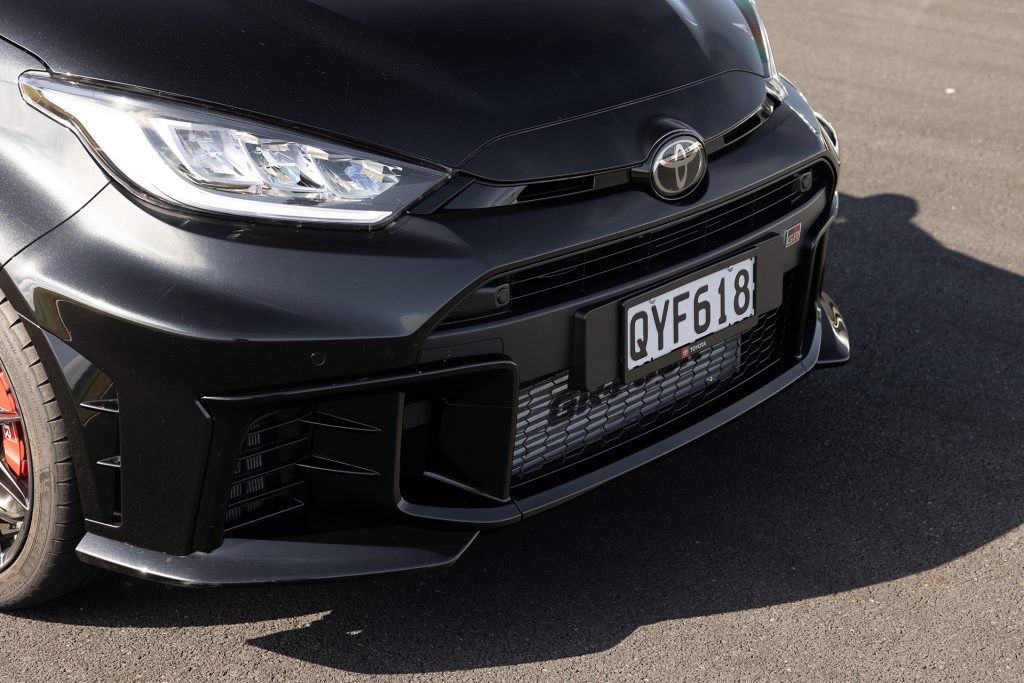
There are changes to the front and rear bumpers, now with steel mesh (more durable) and modular components (no need to replace the whole item, just the corner you cracked), new rear lamps and exhaust tips.
Body rigidity improves with more spot welds and adhesives, the suspension changes include new spring rates and the same dampers as the Corolla. They have shored up the mounting point at the top of the front strut, now located with three bolts.
Inside the instrument panel has been lowered, the controls easier to reach and the steering column and seat have been lowered, the latter by 25mm.
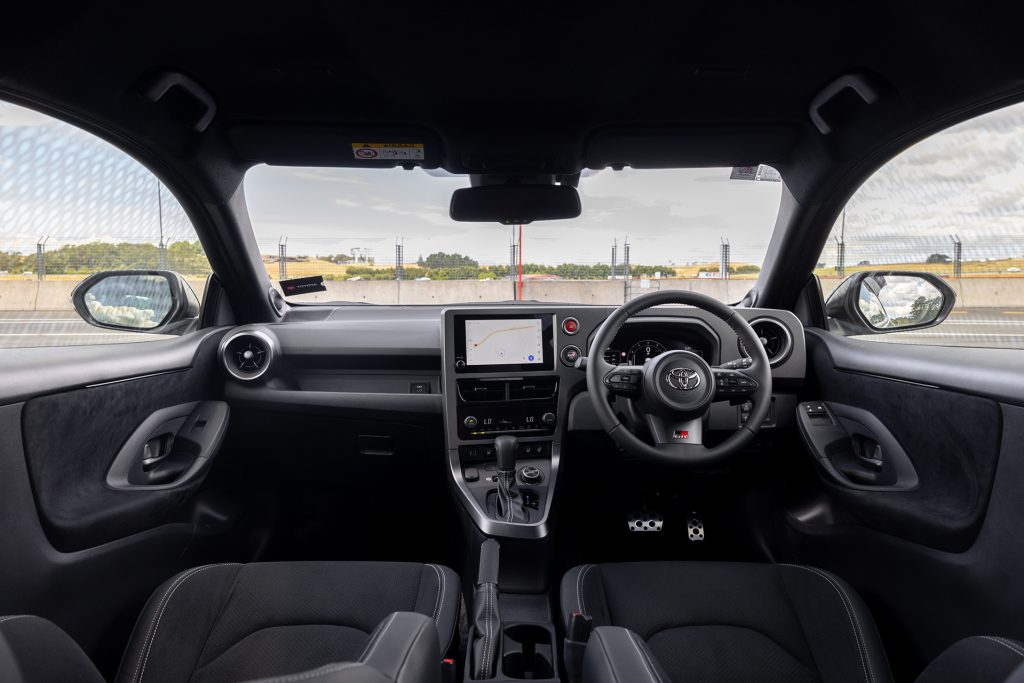
We had a few laps of Hampton Downs in each car, the auto certainly proving quick acting. It’s fast with the changes, snappy but not jerky as to upset the balance. Hit the brakes and it dutifully drops a cog or two ready for the power-on exit. You can flap on the paddles and it delivers quick changes, but the auto mode is pretty well sorted.
The manual still operates slickly too, and is easy to downshift with its auto blipper. The one advantage to the auto is you never snag the limiter. This is easy to do with the manual, given the way the engine revs so vigorously towards the cut zone.
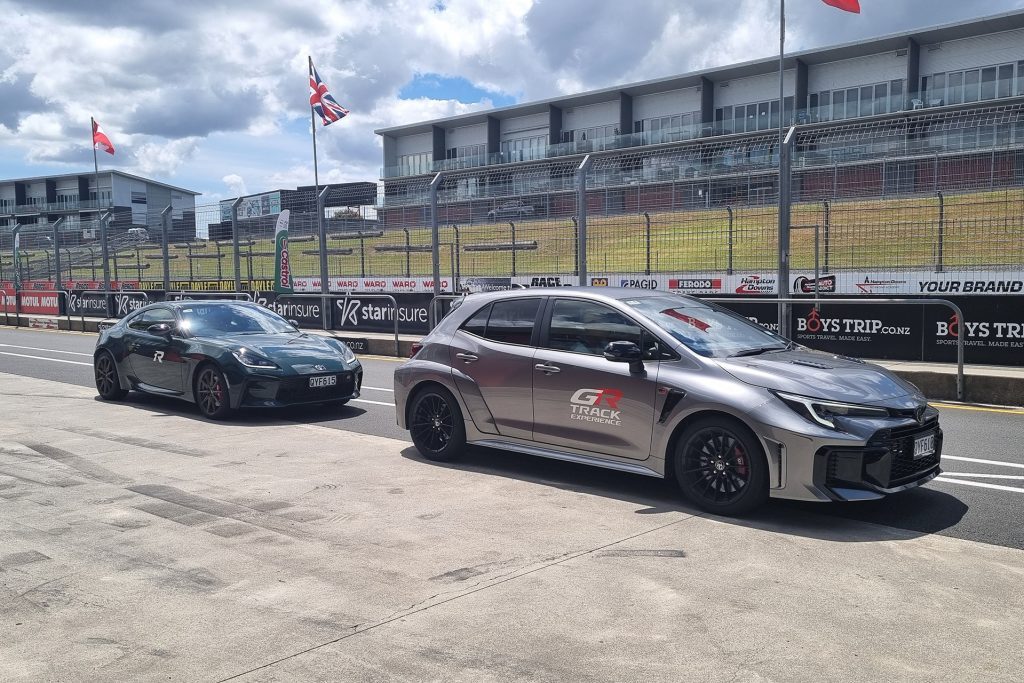
The GR Yaris is livelier than its Corolla sibling, with less intention to push at the front while more likely to wriggle around at the rear. And it pulls harder and quicker, the power to weight ratio superior. The Yaris is now a better fit with its lower seat height, while the lower dash line aids vision. And that’s important on track.
One of the GR86 Hakone Edition models (16 for NZ) was also present. It’s essentially a paint and trim special edition as it shares the same spec as the GT. While it too was an auto, it still was great fun. The six-speed trans is not as quick-witted as the new eight-speed, the changes not nearly as snappy, but it’s still passable (when in Sport mode at least). The GR86 needed to be worked a bit harder to keep up with the turbo cars, but its balance, grip, feedback and rear drive characteristics all make it a stunning package, even in auto trim. And the tuning of the stability control allows enough fun without you feeling the need to turn it off.
Read more – 2022 Toyota GR86 review
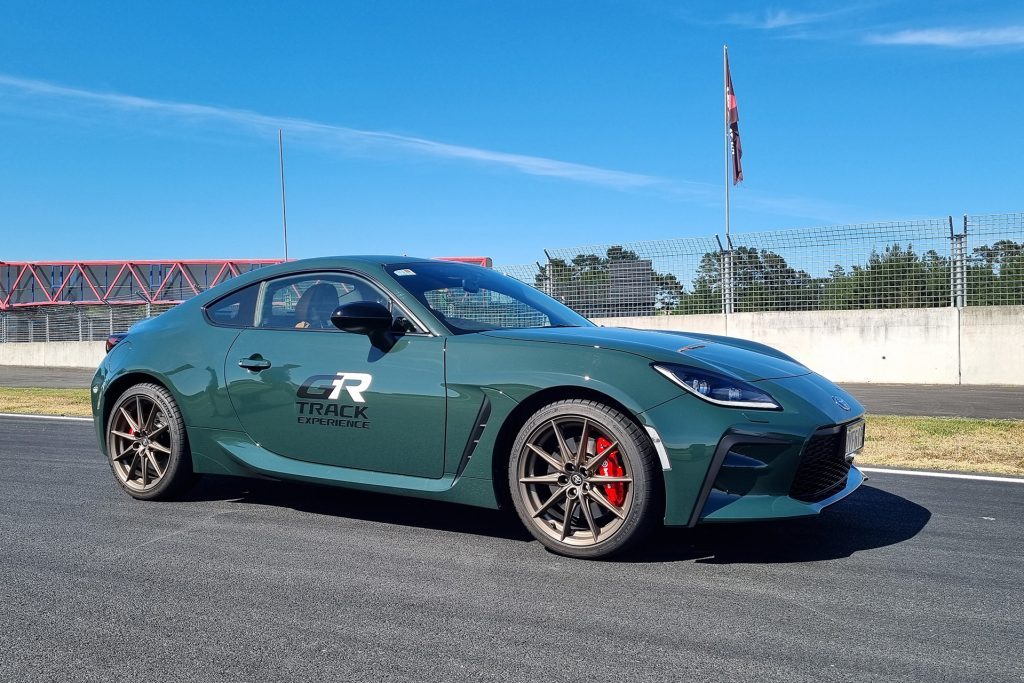
GR Yaris manual – $61,990
GR Yaris auto – $64,990
GR Corolla manual – $65,990
GR Corolla auto – $69,990
While the supply isn’t as limited this time around, Toyota is taking ‘expressions of interest’ for the model at present, and expects to receive around three GR Yaris units a month from March. GR Corolla manual comes online later in the year.
